Don’t want to haggle? How to buy hand-woven rugs (at a good price)
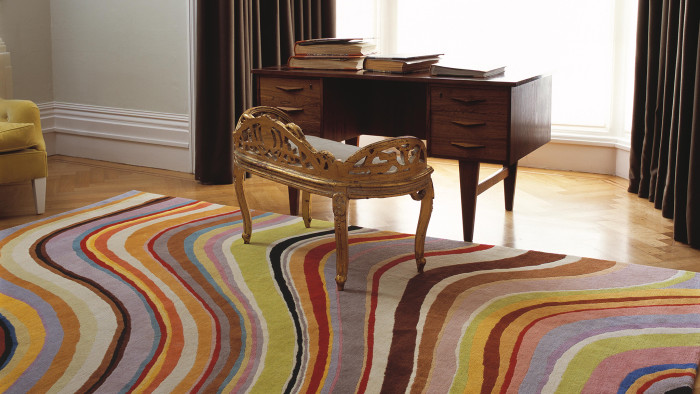
Simply sign up to the Life & Arts myFT Digest -- delivered directly to your inbox.
I have loved rugs ever since becoming friends with a carpet dealer in Ankara, when I worked there in the early 1980s. As Nedret unfurled elaborate silken floral Hereke carpets from post-Ottoman workshops near Istanbul, he would talk to me about his trade. He taught me to appreciate lovely Senneh flat-weave kilims from Iran, vivid Anatolian prayer rugs and striking nomadic Kurdish tent floorings — and many more besides.
I was captivated by the skill and artistry that goes into making a hand-woven rug; how weavers build up knot by painstaking knot to form elaborate, symbolic patterns in vibrant colours over weeks, even months.
How much thought do you give to what goes under your feet at home? Homeowners today pay more attention to furniture, curtains and wall colour. Rugs are often overlooked — yet there are riches to be had, from antique oriental rugs to exquisite handmade carpets in modern designs.
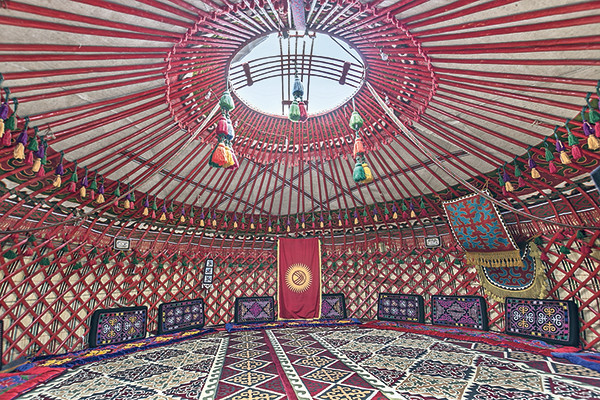
Elizabeth Parker, head of Christie’s rug department in New York, says: “In many great country houses, rugs anchor a big room and hold it together.”
You don’t need a big country house to enjoy great rugs. Some of the loveliest are small enough to furnish the most modest room. They don’t have to go on the floor: they could be a bedspread or a wall hanging. Hand-woven rugs are beautiful objects in their own right that add lustre and texture to any room.
I suspect the reason why rugs tend to be disregarded is a mixture of the mystery that surrounds the provenance of old carpets and the often intimidating business of buying them. How do you know what a fair price is when confronted either by an ingratiating dealer in a Levantine souk (who is definitely better at haggling than you) or those perennial “closing down” sales on London’s smart shopping streets?
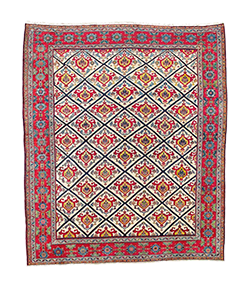
“For many people, it is a problem when you are buying a carpet,” says Christopher Sharp, who with his wife Suzanne, runs the Rug Company, a London-based firm that sells contemporary handmade rugs by designers such as Paul Smith and Vivienne Westwood.
To this day, I struggle to properly identify many rugs or make an informed estimate of their age or worth. I once spotted a Turkish prayer rug in the window of a Palestinian antique dealer in Jerusalem’s Old City. It was 1991, the end of the first Gulf war, when tourists were non-existent.
“I can’t afford to give a discount after so long without a sale,” the dealer pleaded. I bought it for a few hundred dollars, thinking it was a valuable old piece from one of central Anatolia’s prized sources. Some years later, I showed it proudly to a gallery owner in Notting Hill. “It’s OK,” he said, with an unconvinced shrug.
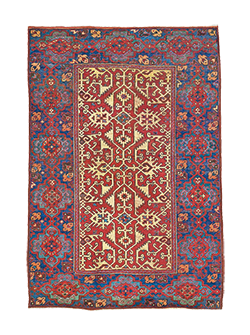
But hand-woven carpets are so beguiling that none of this should put you off (I still have the Jerusalem rug at home). So where to start?
Rule number one is to avoid those “closing down sale” merchants. Find an independent gallery, confess your ignorance and — if they are good — they will help you make an informed choice at a price you feel comfortable with.
A good tip is to take a rug home on approval before committing to buy; that way you can be sure you like it as much as when you saw it flatteringly lit in the gallery.
Going to an auction is another option. In the UK, local auction houses such as Toovey’s in West Sussex have regular rug sales where prices can start at less than £100. At the other end of the scale are the sales at the international auction houses. At Christie’s carpet auction in London this October, 123 lots were on sale with prices ranging from a few thousand pounds to £47,500 for a large 1920 Persian Tabriz based on the design of the 16th-century Ardabil carpet, the world’s oldest dated carpet that is on view at the Victoria and Albert Museum in London.
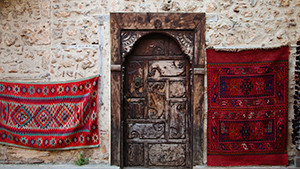
That was far from the top price paid on a square-metre basis. At about £2,000 per sq metre, the Tabriz was far behind the £12,230 per sq metre paid at the sale for a small 17th-century Turkish Lotto rug (so named after the Renaissance artist Lorenzo Lotto, who depicted similar rugs in his paintings).
The good news for those willing to spend a few thousand pounds on an antique rug is that the market is a little slack at present. The US embargo on Iranian goods extends to antique carpets, which means that no American can buy, sell or import Persian rugs, thus undermining prices. For some time, the trend away from the strong colours of oriental rugs has also lowered demand.
This has played to the advantage of private buyers. “The tables have turned,” says Louise Broadhurst, head of oriental rugs and carpets at Christie’s in London. “Dealers don’t have the collateral any more to build stock because the market has shrunk, so the majority of buyers are private collectors who have more money.”
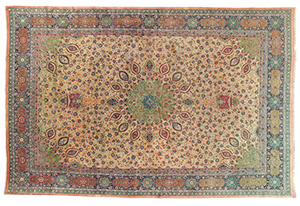
One glorious Persian rug at Christie’s auction was a late-19th-century Bakhtiari, with a bold lattice pattern in reds and yellow on a white background. It went for £15,000, less than £975 per sq metre. It was easily in good enough condition to be used under a dining table.
For oriental rugs, the quality of production declined from the late 19th-century, when synthetic dyes became common and weaving skills diminished. This, and the preference for more subdued colours, has opened an opportunity for those offering new handmade carpets with modern designs.
The Rug Company does this using weavers in Nepal, who employ traditional knotting techniques and high-quality wool from Tibet to produce carpets that are as sumptuous as their antique predecessors.
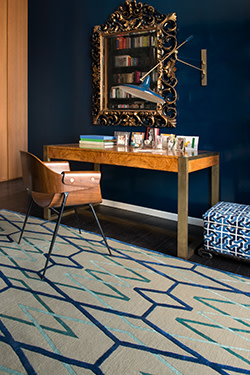
The designs are strikingly contemporary, often posing a huge challenge to the weavers to achieve highly complex and abstract designs in multiple shades of subtle colours.
Sharp believes they are the antiques of tomorrow. “Our Paul Smith Swirl rug is still unbelievably popular after 15 years,” he says. “It’s too early to see a resale market but I think there will come a time when they will appear at auction, as the quality is so good.”
For now, there may be a “new car” effect on these rugs — one that sees their value diminish the minute you take them home. Prices are quite high; an Alexander McQueen piece from the Rug Company can cost more than £2,600 per sq metre. But they are beautiful objects into which have gone long hours of artistry and skilful labour.
The most important thing when buying a rug is to love it for itself, like a painting. You may not want it to clash with the curtains, but if that bothers you, put it somewhere else. As for how much to pay, here’s what Nedret used to say: “If you love the carpet and you love the price, buy it. If you love the rug but you don’t love the price — remember it.”
Photographs: Christie’s; Getty Images
Comments